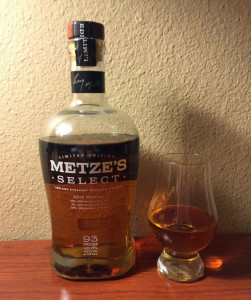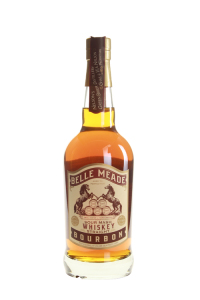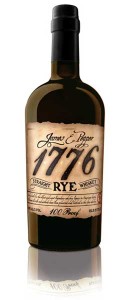By Richard Thomas
For a few years now, the letters “MGP” have been synonymous with sourced whiskey. Although first driven to prominence because of the proliferation of brands using MGP’s stock of 95% rye, 5% malted barley whiskey, most seeking to exploit the Rye Craze of earlier in the decade, MGP has also furnished plenty of bourbon and other types of whiskeys to America’s independent bottlers. Now that the big distillers no longer see themselves as having excess stock to sell, the industrial distillery in Indiana that was built to provide blending stock for the (now defunct) Canadian booze titan Seagram’s has become America’s key supplier of aged stock whiskey.
Not every sourced whiskey is based on MGP stock (Angel’s Envy Bourbon and Old Pogue Bourbon come to mind as major examples of whiskeys that are made from stock that didn’t come from MGP), but it’s safe to say MGP’s whiskeys are ubiquitous in bars and liquor stores today. Although MGP expanded their product line in 2013, the new choices only recently became available in even a youngish form. Prior to that, MGP had a much smaller menu of choices. For rye there was just the one, the 95% rye, 5% malt whiskey.
This made distinguishing yourself as a sourced brand based on MGP whiskey about putting the best possible twist on the same juice everyone else, more or less, had access to. Some did this by acquiring older stock or innovative barrel finishes, others by raising the proof, and some through sheer blending skill. Not all MGP-sourced whiskeys are the same, and a handful are real stand-outs in their class.
Top MGP-Sourced Bourbons
Belle Meade Bourbon: MGP’s origins mirror the Canadian model of whisky-making (by design: Seagram’s built it): create several different distinctive whiskeys and use them as elements in a blending palette. These whiskeys were not really meant to be bottled independently, although today’s independent bottlers often do exactly that. Nelson’s Greenbrier, however, used the stock bourbon choices then available to create their own unique blend, essentially going the route originally intended. The result is an MGP bourbon quite different from most the others.
Boone County 1833 10 Year Old Bourbon: If you can find it, this is a great example of a middle aged MGP bourbon bottled at 90.8 proof. The main problem with this expression, in fact, will be finding it, because it is in very limited, Northern Kentucky-centric distribution. That said, if you see a bottle, buy it. MGP stock that is 10 years-plus old is difficult and expensive to obtain these days, so once this stuff is gone, it’s gone.
Metze’s Select Bourbon: MGP has made some tentative moves in the direction of developing their own brands. One was the acquisition of George Remus Bourbon, but it was the release of Metze’s Select Bourbon that caught the most attention. Like Belle Meade, this limited edition named for the-then Master Distiller Greg Metze is a blend of different types of MGP bourbons. It was meant as a showcase of what MGP bourbons could do just as much as it was testing the waters and commemorating Metze, and it succeeded on all counts.
OKI Reserve Bourbon: Located across from Cincinnati on the Kentucky side of the Ohio River, New Riff Distilling hired Metze’s predecessor as MGP Master Distiller, Larry Ebersold, as their chief consultant. So, when New Riff needed to start a sourced line of whiskeys to build their brand while their in-house product was made and matured, Ebersold knew what to buy from his old place of employ.
New Riff picked up a substantial horde of MGP’s high rye bourbon stock, and has been releasing successively older batches. Examples of the eight and nine year old OKI Reserves are all still out there, and the current is the ten year old. If you like spicy, high rye bourbons, you really need to check this one out. Also, as with Boone County’s 1833 10 Year Old, once this stuff is gone, it’s gone.
Smooth Ambler Old Scout 10 Year Old: Like OKI and Boone County 1833, this is a middle aged example of MGP bourbon, and some bloggers argue that it’s the best in its class. Even if you don’t necessarily agree with that point, Old Scout 10 is bottled at 100 proof, definitely making it the strongest in its class. It too is a high rye, based on a 60% corn, 36% rye and 4% malted barley mash bill.
Top MGP-Sourced Ryes
James E. Pepper Rye: The Pepper Rye stands out because it is bottled at 100 proof, and at under $30 a bottle is quite reasonably priced. All the other top examples of MGP-sourced rye are either much stronger or received a value-adding barrel finish. So, among all the straight-up versions of MGP’s 95% rye, 5% malted barley recipes out there, this one is the best.
Angel’s Envy Rye: This one comes from one of the American trailblazers in secondary maturation (i.e. barrel finishing) and uses rum casks. That rum finish endows the spicy rye whiskey with a sweet, creamy character, and that package is bottled at a hefty 100 proof.
Redemption Barrel Proof Ryes: Redemption has created a series of middle aged, cask strength expressions of MGP’s 95% rye, ranging from 7 to 10 years old. This takes the premise of the Pepper Rye, ups the ante in the strength department and with a more mature product, although it does come with a heftier price tag.
WhistlePig Old World 12 Year Old Rye: The flagship WhistlePig whiskey is a 10 year old 100% rye imported from Alberta Distillers in Canada. This product takes 12 year MGP rye (even older than the aforementioned Redemptions), finished it in French Sauternes, Madeira and Port wine casks, and blends it back together. In a loose sense, it takes the improvements of Angel’s Envy and Redemption (one of them, anyway) and puts them together. Although it’s not cheap ($120), WhistlePig Old World 12 Year Old Rye is the oldest and thought of as one of the best examples of an MGP-sourced rye whiskey around.
 The Whiskey Reviewer A World of Whiskey, Poured Every Weekday
The Whiskey Reviewer A World of Whiskey, Poured Every Weekday




Sent from Paul to Paul